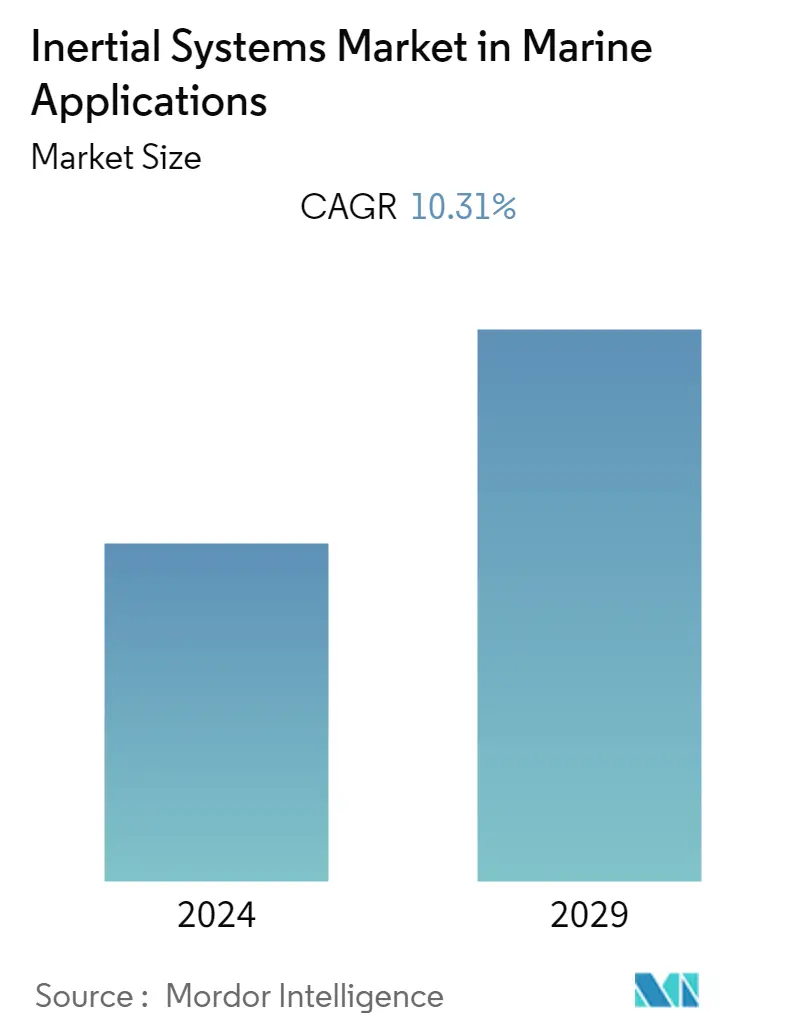Market Size of Inertial Systems Industry in Marine Applications

| Study Period | 2019 - 2029 |
| Base Year For Estimation | 2023 |
| CAGR | 10.31 % |
| Fastest Growing Market | Asia-Pacific |
| Largest Market | North America |
| Market Concentration | Medium |
Major Players
*Disclaimer: Major Players sorted in no particular order |
Need a report that reflects how COVID-19 has impacted this market and its growth?
Marine Applications Inertial Systems Market Analysis
The inertial system market in marine applications is expected to record a CAGR of 10.31% over the forecast period. The rapid advancement of the global lifestyle has produced easier equipment to operate, accomplished with the use of motion-sensing technology that heavily utilizes inertial sensors.
- MEMS-based solutions have gained popularity in the navigation sector over the past few years due to improved error characteristics, environmental stability, increased bandwidth, improved g-sensitivity, and the growing accessibility of embedded computing power to run sophisticated fusion and sensor error modeling algorithms. Vendors are switching from FOG to MEMS technology, and antenna array stabilization applications appear to follow suit.
- The cost differential between MEMS-based systems and conventional FOG or RLG navigation systems, which cost over USD 30,000 instead of USD 1,000 for MEMS-based navigation systems, is one of the main factors driving growth in MEMS-based systems. However, compared to other systems on the market, FOG- and RLG-based solutions provide more precision.
- The market is also being driven by an increase in applications based on motion sensing. The ongoing downsizing of sensors and related components is concentrating progress toward sophisticated function sensors. For instance, Xsens improved versions of its motion-sensing Inertial Measurement Unit (IMU) modules from the MTi 1-series, which offer improved roll, pitch, and yaw measurement accuracy and higher tolerance of mechanical stress compared to the first generation of the product in various energy and infrastructure projects.
- The price of INS systems, including purchase, operation, and maintenance, is a drawback. Other drawbacks include heat dissipation and escalating navigational mistakes over time. The size, weight, and power criteria are still greater than those for GPS receivers, although they decrease over time as technology advances.
- Numerous commercial and non-commercial operations have been put on hold due to the COVID-19 outbreak. The shipping and maritime sector is one of the businesses severely impacted by the outbreak. Since their workforces have been curtailed for safety reasons and to stop the spread of COVID-19, the pandemic has left the shipping and maritime sectors in the worst conceivable position.
